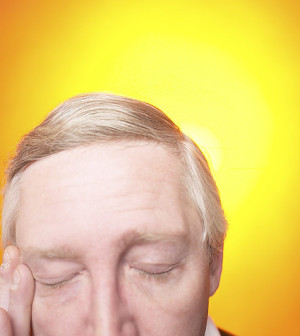- Navigating Your Midlife Crisis: Embracing New Possibilities
- City Raccoons Showing Signs of Domestication
- Mapping the Exposome: Science Broadens Focus to Environmental Disease Triggers
- One Week Less on Social Media Linked to Better Mental Health
- Your Brain Changes in Stages as You Age, Study Finds
- Some Suicide Victims Show No Typical Warning Signs, Study Finds
- ByHeart Formula Faces Lawsuits After Babies Sickened With Botulism
- Switch to Vegan Diet Could Cut Your Greenhouse Gas Emissions in Half
- Regular Bedtime Does Wonders for Blood Pressure
- Dining Alone Could Mean Worse Nutrition for Seniors
5 Warning Signs of Stroke

Knowing five sudden and severe warning signs of stroke can help save lives and reduce the number of people living with disabilities, a stroke expert says.
” ‘Sudden’ and ‘severe’ are key words, but if in doubt, do not take chances,” Dr. Doojin Kim, a neurologist at UCLA Medical Center in Santa Monica, said in a hospital news release.
The American Stroke Association urges anyone who notices the following sudden and severe signs of stroke to immediately dial 911:
- Sudden numbness or weakness in the face, arm or leg (especially on one side of the body).
- Sudden confusion or trouble speaking or understanding speech.
- Sudden vision problems in one or both eyes.
- Sudden difficulty walking or dizziness, loss of balance or problems with coordination.
- Severe headache with no known cause.
Stroke is the leading cause of adult disability in the United States. People having a stroke need immediate medical attention to improve the effectiveness of treatment and reduce their risk for death or long-term side effects, Kim explained.
“If someone has an ischemic stroke — the type in which a brain artery becomes blocked or restricted — the effects often can be reversed or drastically reduced if treatment is started within three hours,” said Kim. “But if they’re unsure or they wait to see if symptoms will go away, the window of opportunity for effective treatment can close.”
However, the warning signs or symptoms of stroke may go unrecognized. Part of the problem is that many people think strokes happen to “other people,” Kim said.
“Stroke is occurring more and more often in younger people,” he said. “It’s still more common in those in their senior years, but just because someone is middle-aged or even younger doesn’t mean they can’t have a stroke.”
Strokes are more common among women than men, the American Stroke Association reports. Black people are also at higher risk than whites, Kim said.
People with a family history of stroke are also at greater risk of stroke, said Kim. This risk factor can’t be changed. But, there are ways people can reduce their risk for stroke, he advised, including:
- Exercising regularly.
- Maintaining a normal weight.
- Following a healthy diet.
- Maintaining healthy cholesterol levels.
- Keeping blood pressure in check.
Also, don’t smoke.
“Although most people have heard the list of risk factors before, it never hurts to provide a reminder because we often think, ‘It can’t happen to me.’ The reality is, it can,” Kim said.
More information
The American Stroke Association provides more information on warning signs of stroke.
Source: HealthDay
Copyright © 2025 HealthDay. All rights reserved.










